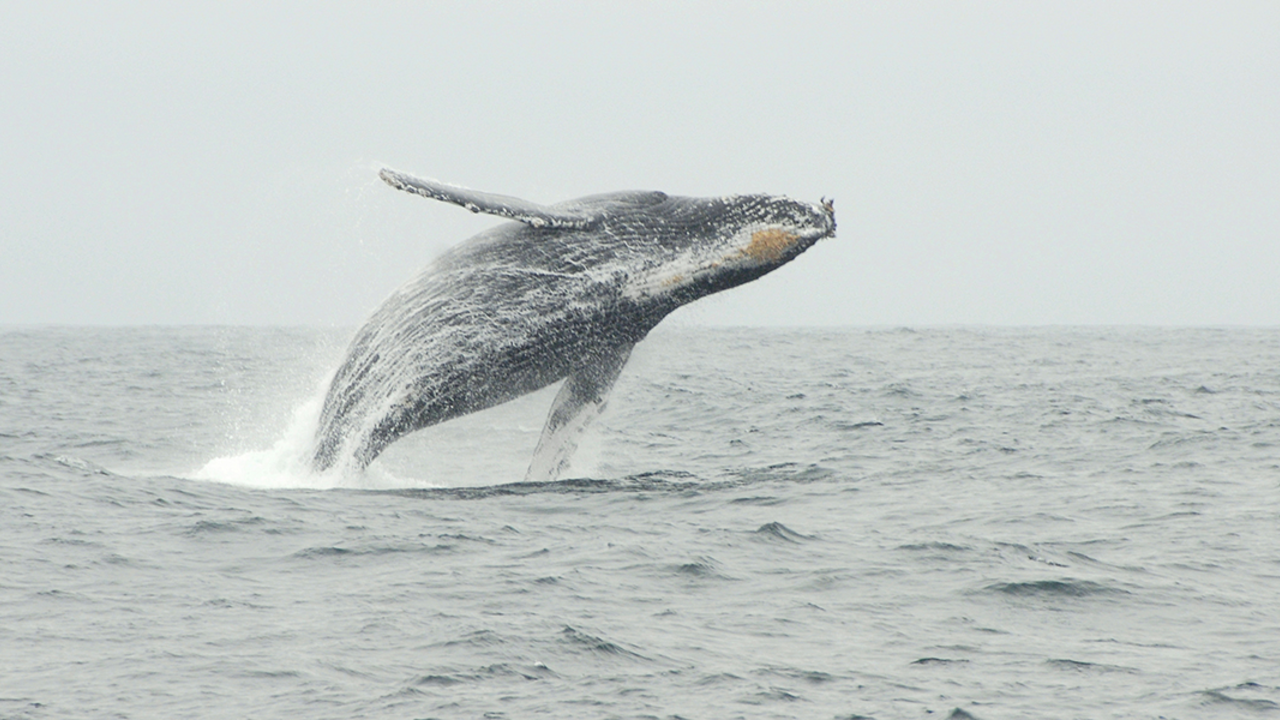Baleen In: Record Number of Whales Spotted This Spring

Jessica Weinberg-McClosky/Parks Conservancy
Below the choppy, cerulean surface of the Golden Gate Strait and the waters off the Golden Gate National Parks, the world’s largest animals are congregating for a buffet of epic proportions.
Whales—humpbacks, grays, and even the massive blue whales—have been gathering in unprecedented numbers off the shores of San Francisco this spring, causing a bonanza of whale watching opportunities for lucky onlookers and park visitors. Whales are typically seen in large numbers along the California coast in July through September, but this year is an outlier, as whales have been observed in droves since May.
Dr. Jaime Jahncke, California Current Group Director for Point Blue Conservation Science, went on an eight-day research expedition along the California coast in May 2016 and observed about 30 to 80 whales every day—mostly humpbacks and a few gray whales.
“This is the first time we’ve had such great numbers [of whale sightings] this early in the year,” Dr. Jahncke explains. “Generally, the peak numbers have appeared in July. Historically, large numbers are expected in the fall and not in the summer.”
The observers even noted a couple of gargantuan blue whales—the largest animal on Earth.
“We saw blue whales, which, in my record, don’t usually show up until July,” Dr. Jahncke says. “It’s really rare for us to see a blue whale this early in the year.”\Dr. Sarah Allen, Ocean and Coastal Resources Program Lead for the Pacific West Region of the National Park Service, believes this gathering of whales is due to an abundance of prey (primarily anchovies). One theory suggests that nutrient-rich cold waters, stirred by La Nina conditions, are beckoning great numbers of fish.
“They [whales] wouldn’t be coming here unless there was a critical mass [of food],” Dr. Allen explains.
Combine the tapered opening of the Golden Gate Strait with plentiful food, and you have a recipe for what appears to be a feeding frenzy in a tight space.
“You’ve got a tremendous narrow passage into the estuary so everything is compressed; physically it concentrates the prey [along the tidal zones],” Dr. Allen explains.
While blue whales exclusively eat krill, humpbacks are far less picky, supplementing their krill diet with fish. Generally, according to Dr. Jahncke, if humpbacks are observed along the shelf break at the ocean bottom, they are feeding on krill. If they are seen close to the coast, they are feeding on fish.
The prevalence of humpbacks so close to the Golden Gate and Bay could indicate an abundance of fish—a welcome change to the prevailing conditions of 2015, when ailing pinniped populations suffered from food shortages (among other environmental factors).
But the whales’ proximity to the fish-rich coast could also indicate a relative scarcity in krill, Dr. Jahncke speculates. He further adds that other factors could be causing these gigantic marine mammals to congregate near the Golden Gate.
“One of the reasons we have seen so many whales this early in the year, and so close to the coast, might be because of unfavorable conditions in their breeding grounds [off the coast of Central America and Mexico], which may have forced the animals to move north sooner than other years,” Dr. Jahncke says.
For those wishing to spot a passing whale, both Dr. Allen and Dr. Jahncke recommend any point along the coastline (Point Reyes Headlands, Point Bonita, Lands End, or either side of the Golden Gate Bridge). Dr. Allen recently took a trip to the Point Reyes Lighthouse, and was greeted by spouts from humpbacks a little less than a quarter-mile off the shore.
She recommends that whale watchers always pack a pair of binoculars, to make it a wee bit easier to spot these magnificent creatures in their natural habitat.
A video posted by Parks Conservancy (@parks4all) on Jun 29, 2016 at 1:08pm PDT
